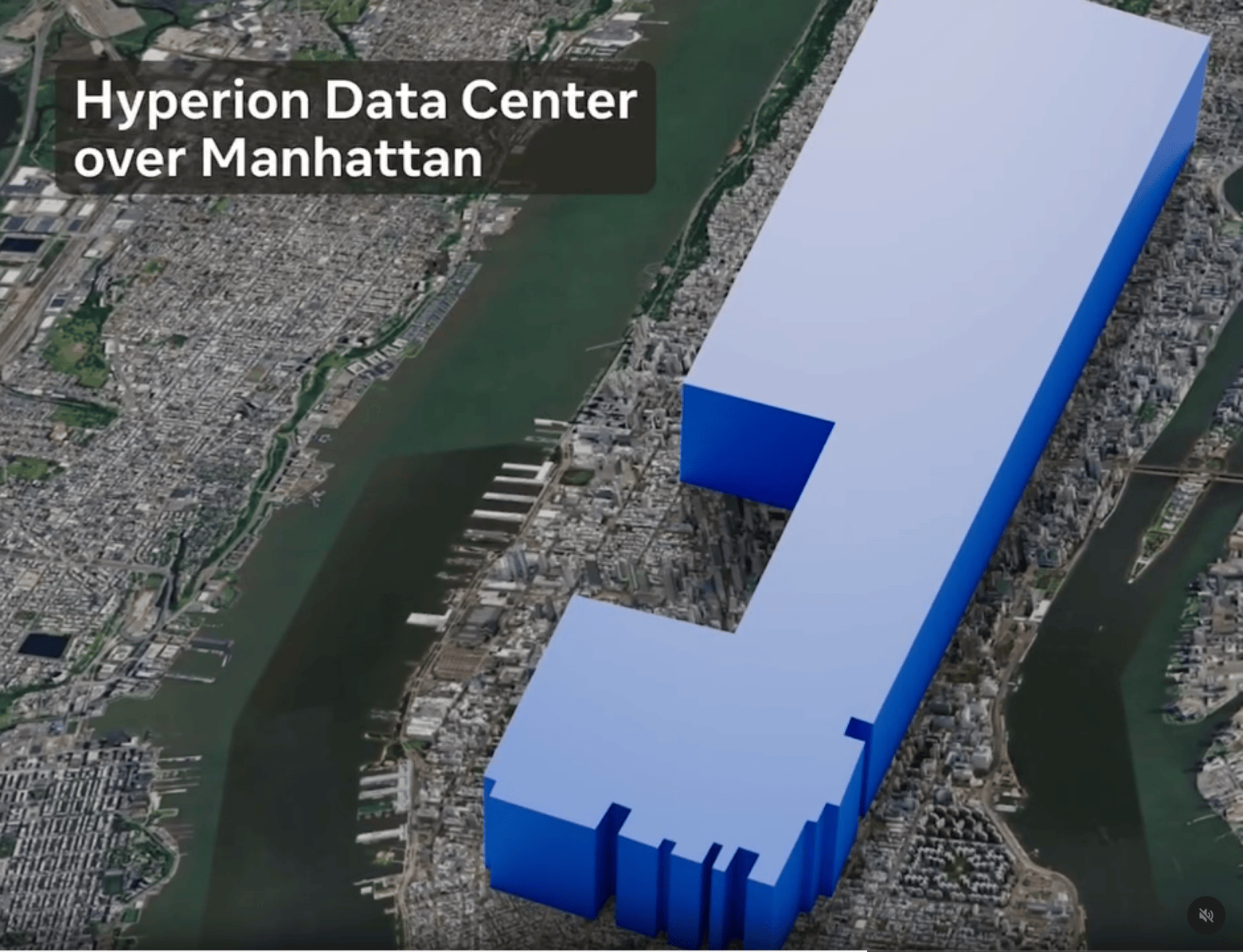Meta takes a significant step forward in the global race for Artificial General Intelligence (AGI), revealing one of the largest infrastructure investments in tech history. Founder and CEO Mark Zuckerberg confirmed plans to build several “superclusters” of AI capable of delivering up to 5 gigawatts (GW) of electrical power, starting with the Prometheus data centers (1 GW, operational in 2026) and Hyperion, which could scale up to 5 GW and cover an area comparable to much of Manhattan Island.
Zuckerberg shared on Threads that his goal is to assemble the most concentrated and elite talent pool in the industry, and that the company has the capital to invest “hundreds of billions of dollars” into infrastructure for training and inference of superintelligence models.
Tent-Style Data Centers
In an unconventional yet highly agile move, Meta has adopted the concept of “tent-style” data centers—an approach inspired by Elon Musk’s xAI, which relies on accelerated deployment models. These centers eliminate traditional roofs, allowing construction at a much faster rate than conventional facilities. Furthermore, they do not include backup diesel generators, representing a radical shift in availability and redundancy strategies.
Instead, Meta will use prefabricated energy and cooling modules, coupled with in-house electrical substations and, in some cases, on-site natural gas generation plants. Currently, the company is building two 200 MW gas plants in Ohio.
Computing Power as a Strategic Advantage
According to SemiAnalysis, Meta will be the first company in the world to deploy a data center exceeding 1 GW exclusively for AI, reaching over 3 quadrillion FLOPS (floating point operations per second). Each supercluster—referred to as a “titan cluster” by Zuckerberg—will enable Meta to achieve an unprecedented ratio of computing capacity per researcher. This is a key element in their strategy to compete with giants like Amazon, Google, and Groq in AI infrastructure.
Though their LLaMA models have yet to gain significant market traction, Meta could become a leader in AI power within the U.S. if these centers go operational as planned.
The Business of AI: Still Not Profitable but Moving Forward Without Limits
Meta isn’t alone in this infrastructure race; companies like NVIDIA have announced global investments of around $500 billion into data centers, and xAI has even transported entire power plants to support their projects. All of this occurs while the economic model for generative AI still lacks clear profitability.
Nevertheless, the message is clear: AI will change everything. Major tech firms are betting heavily on leading the future, even if it means installing millions of GPUs in temporary structures.
Environmental Impact and Strategic Concerns
Building data centers at this scale raises environmental and social questions. A typical data center consumes about 500,000 liters of water daily for cooling, but new AI-focused clusters could multiply that figure by ten, raising concerns about their impact on local communities and ecosystems.
Furthermore, eliminating backup generators and relying solely on internal energy infrastructure is a risky bet. While it reduces costs and deployment times, it also increases vulnerability to power outages or logistical failures, especially in extreme climates or unstable regions.
What’s Next for Meta?
Prometheus is just the beginning. Zuckerberg says Meta is building several multi-GW clusters, with the next named Hyperion—an evocative mythological name that hints at the project’s scale. The vision is clear: “Meta Superintelligence Labs” will, in Zuckerberg’s words, boast “the highest levels of computing capacity in the industry” and “the greatest power per researcher on the planet.”
The race for superintelligence is no longer solely about algorithms; it’s a battle for energy, infrastructure, and global talent. With its colossal clusters, Meta aims to set the standard.
In summary: While most governments face energy restrictions and sustainability issues, Meta is launching an unprecedented push for infrastructure dominance in AI, setting the pace for an industry still seeking its business model but unafraid to build the future with gigawatts.
Sources: Tom’s Hardware and Mark Zuckerberg on Threads

